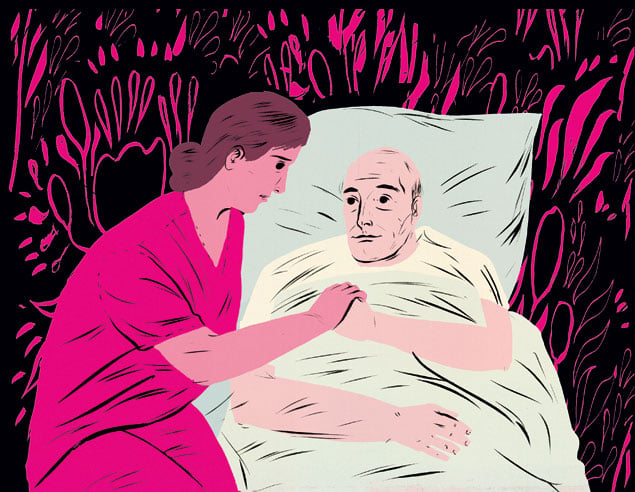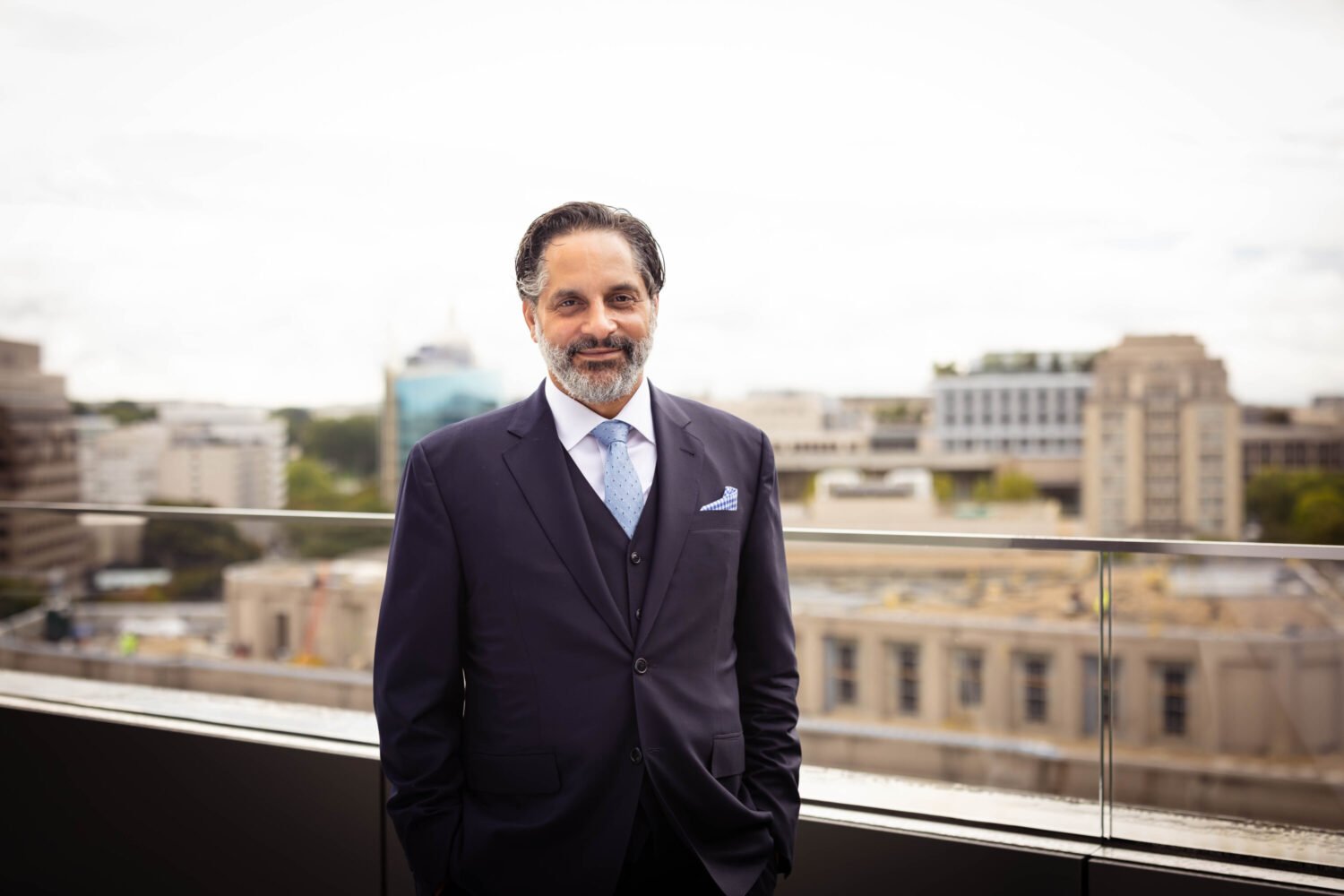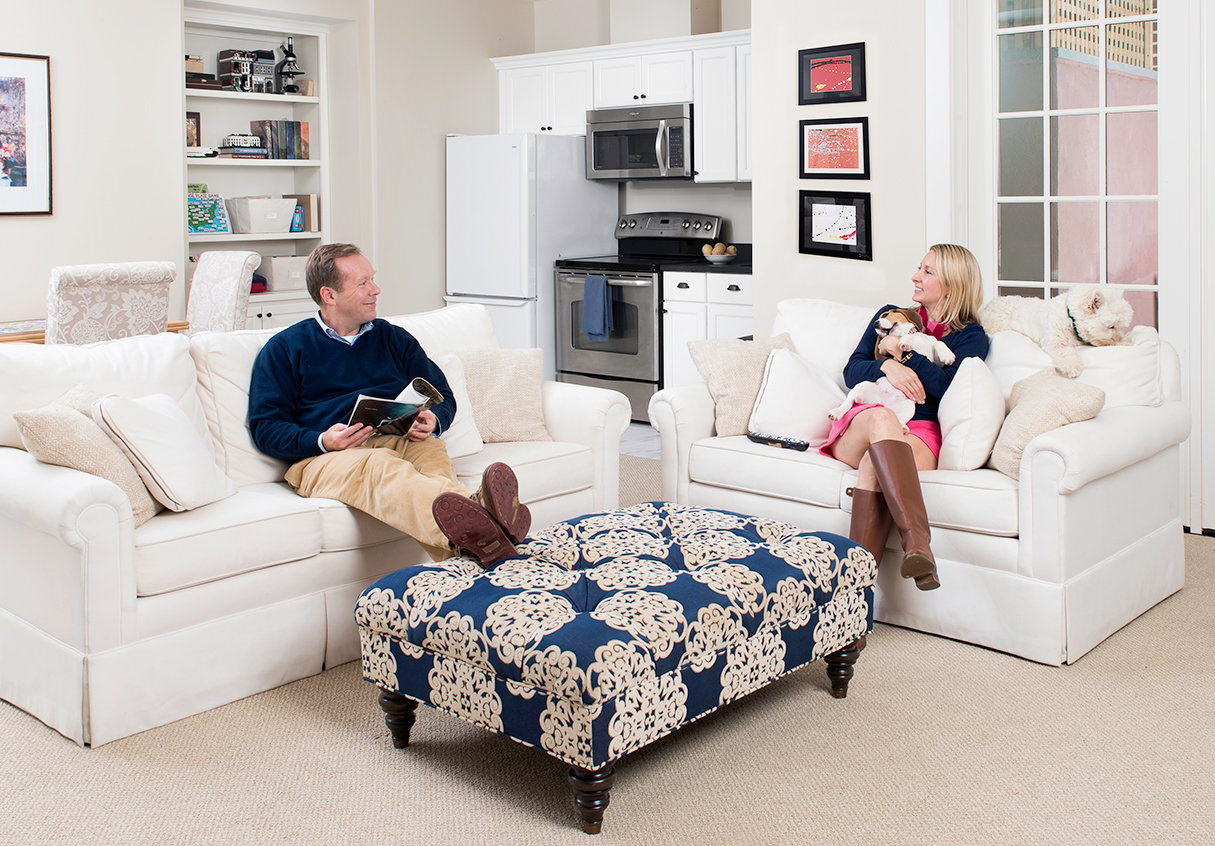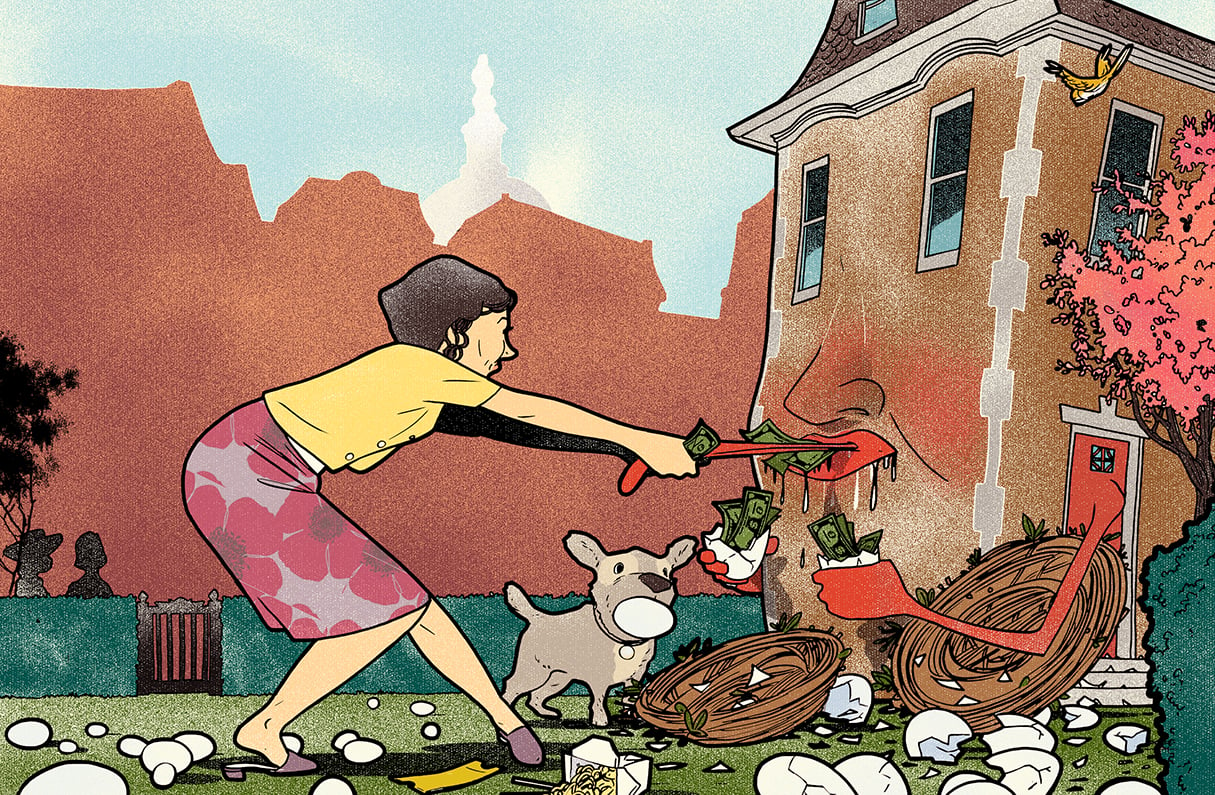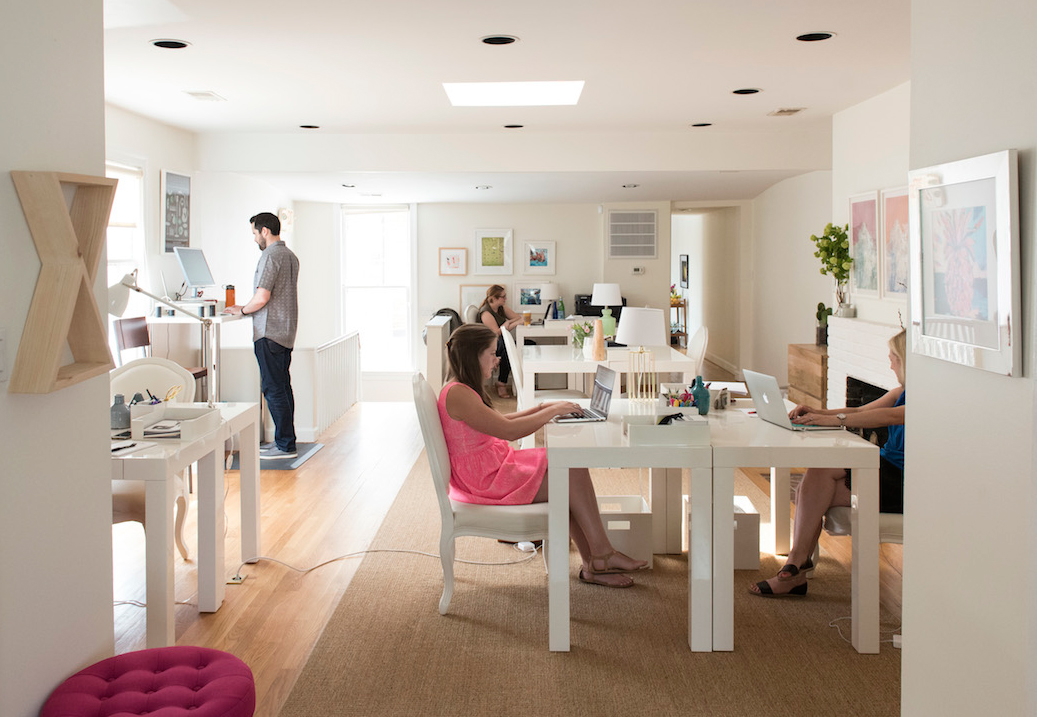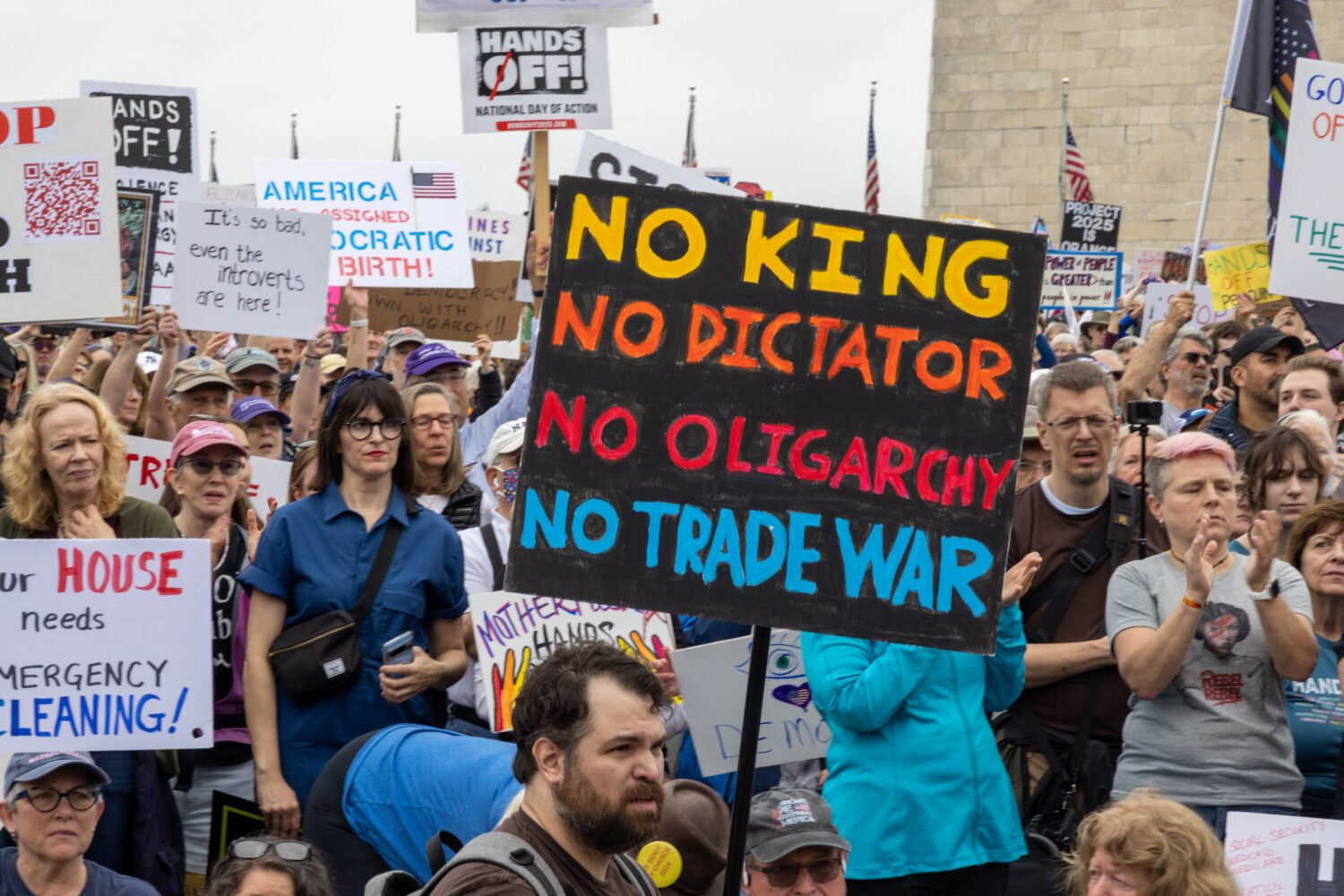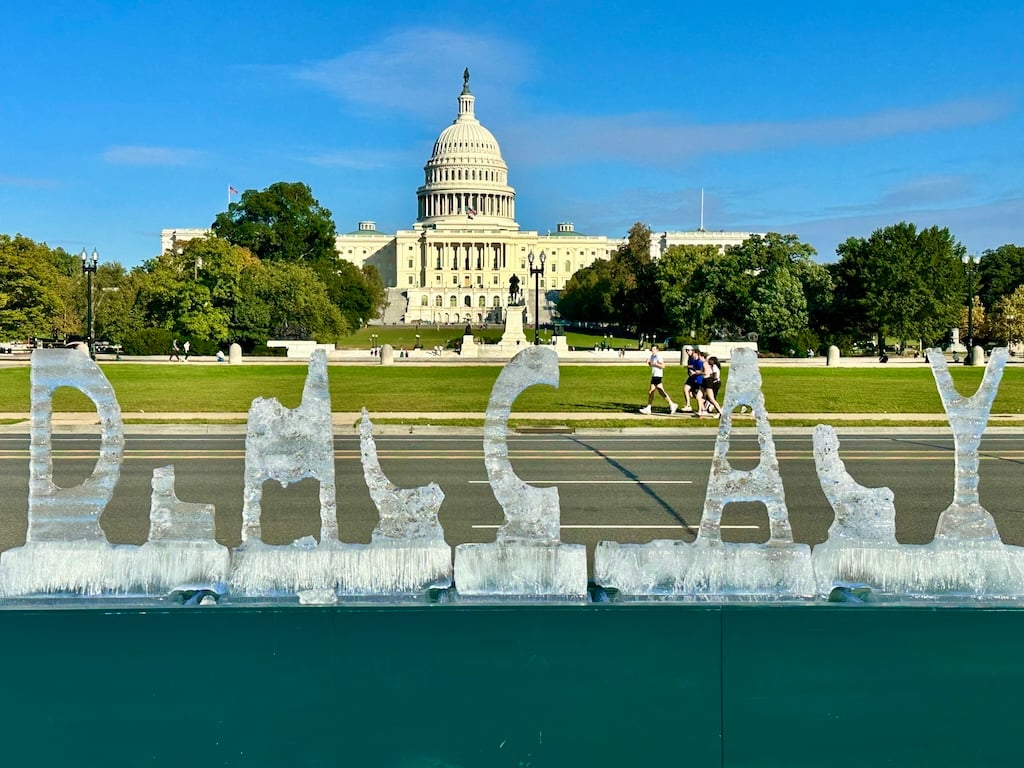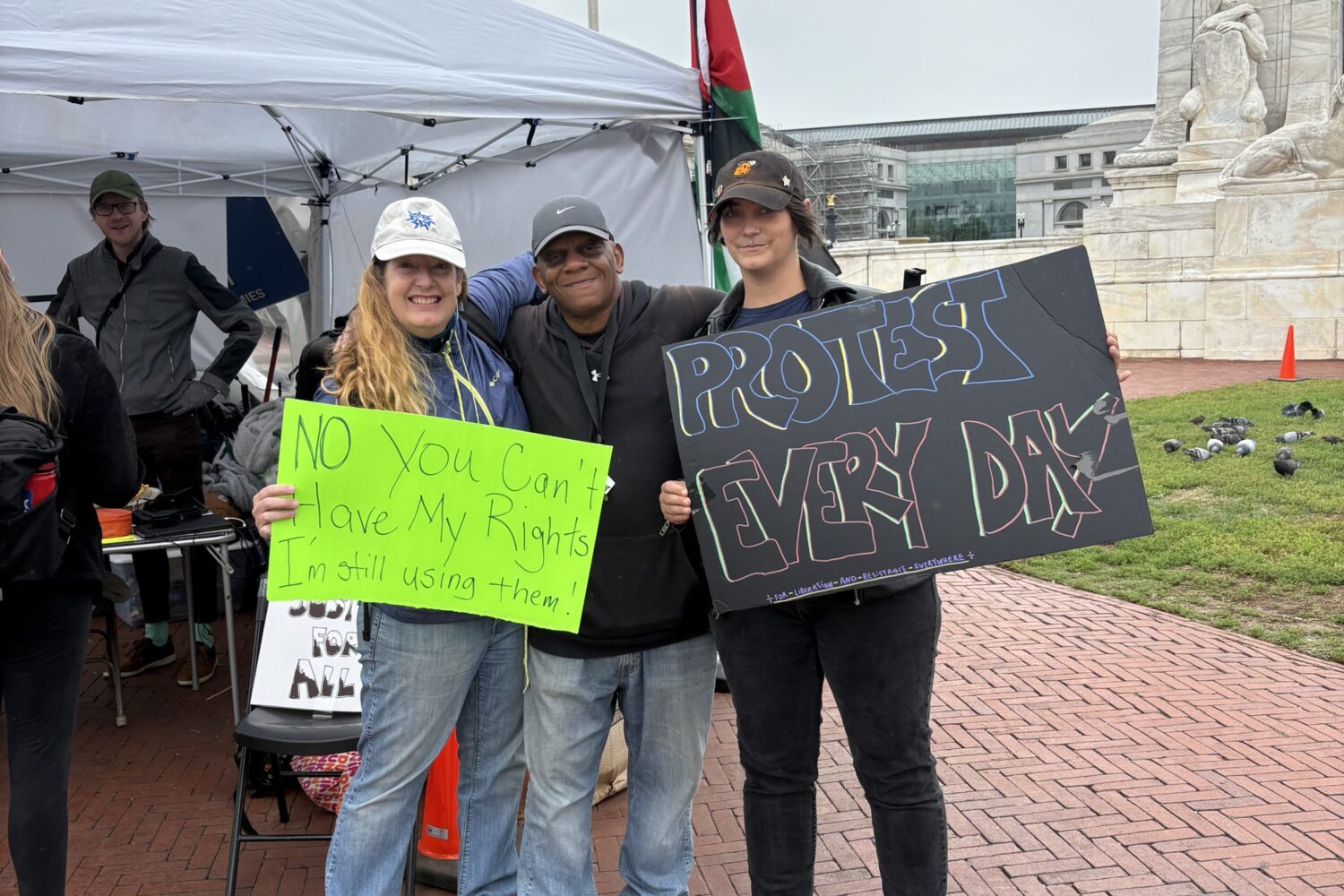On a humid May afternoon in Vienna, 74-year-old Al Hlavin sits
in a reclining chair in his bedroom watching Dog Whisperer. In
this episode, a spoiled Pomeranian won’t stop biting strangers. Her owner
doesn’t know what to do.
“It’s humbling,” Hlavin says.
Hlavin is suffering from a neurological disease so rare that it
was discovered only in 1968. Called corticobasal degeneration, the disease
has, over five years, steadily robbed him of the ability to speak and
walk. He hasn’t left the bedroom in months.
Hlavin’s wife, Martha, sits on a bed nearby. Nineteen years
younger, she has the tall, straight, slim carriage of a runway model.
Before meeting Al, she answered phones in the Capitol Hill office of
Michigan congressman Carl Purcell and wrote a guide to dating for single
Catholics. With her direct manner, she wouldn’t be out of place dispensing
rapid-fire dating advice on a daytime talk show. Instead her life is
focused on this one room in Vienna and its lone occupant.
Linda Cooper enters the bedroom. She’s been a nurse for more
than 40 years, a hospice nurse for eight—she came to the field after
seeing the care her father received from his hospice nurse. Six years
before Hlavin signed on to the service, his mother was her patient. When
Cooper talks, her face is infused with a softness you see only in those
who’ve dedicated their lives to care.
“Did you sleep well?” she asks Hlavin.
He nods.
“How’s the pain?”
“It is humbling,” he says.
He and I sit watching TV. The Pomeranian is miraculously
healed. The happy family hugs the Dog Whisperer. I look over and Hlavin is
crying. He doesn’t have the muscle control to wipe away the
tears.
• • •
Linda Cooper works for Capital Caring, the second-oldest and
fourth-largest hospice in the country; it serves an average daily caseload
of 1,100 patients in the Washington area. Capital Caring CEO Malene Davis
says its goals are simple: “Quality of life for those at the end of it.
The best pain management possible. A way to be with the ones you
love.”
Hlavin has been able to stay at home because of the work of
Capital Caring’s doctors, nurses, social workers, and certified nursing
assistants. Because he’s at home, his three sons—ages 22, 20, and 14—are
constantly nearby, their youthful exuberance a welcome lift. (He also has
five children from a previous marriage.) Every morning, John, the
youngest, walks to school through the woods outside Hlavin’s window and
waves.
“Were it not for hospice, he’d be dead or a number on a chart
somewhere,” says Martha Hlavin. “Instead we’ve been given the opportunity
to experience this process here at home. That’s a precious
thing.”
To join hospice, you must have a life expectancy of less than
six months. You can pick up the phone and call a hospice agency directly
if you think someone in your family might qualify, and if a physician
determines he or she does, you could have medical, psychosocial, and
emergency plans in place by the end of the day.
Approximately 1.6 million US patients received hospice care in
2010, more than double the number of just ten years before. In 2000, there
were 2,315 hospices in the country; in 2010, there were 5,150, including
20 in the Washington area. And while private residences are still the
primary location of most hospice care in the United States, hospice
increasingly serves patients in nursing homes, assisted-living facilities,
and hospitals.
This rapid spread of service, almost entirely covered by
Medicare and Medicaid, actually saves money. According to a 2007 Duke
University study, the average hospice patient reduces Medicare program
expenditures by $2,309 during the last year of life. In evaluations,
patients also report that hospice care markedly improves their quality of
life.
• • •
With the breakneck expansion come concerns, however. First is
the challenge of regulating such explosive growth. Thousands of patients
are fraudulently signed on to hospice before they qualify, milking the
government of tens of millions of dollars a year. For-profit hospices, a
rarity a decade ago, made up half the nation’s total in 2010, bringing new
levels of competition and regulatory complexity.
Another issue is that a great percentage of patients come to
the service late. “One-third of patients die within seven days or less,”
says Jon Radulovic, the National Hospice and Palliative Care
Organization’s spokesman. Lengthening the stays would increase their
quality of life and financial savings.
Even with all the challenges, the growth of hospice has sparked
a remarkable—and largely untalked-about—transformation of the American
health-care system. While politicians and pundits debate the role, size,
and future of Medicare, it has been changing all the while. Hospice
care—structured medical care with comfort, not cure, as its goal—fulfills
many of the goals of health-care reform: cost savings, better utilization
of services, patient benefits. And as baby boomers—the 78 million
Americans born between 1946 and 1964—get older, hospice’s role in American
health care will become more important.
Though our cultural discomfort with dying keeps it off the
front pages, hospice is very much at the center of this national
moment.
Back in Vienna, I ask Hlavin how hospice has benefited him. He
considers the question at length.
Not long after graduating from Johns Hopkins at age 19 with an
engineering degree, Hlavin designed, built, and managed Fairfax County’s
public schools. The 12th-largest school district in the country, Fairfax
has myriad challenges, and Hlavin’s designs in ameliorating these were so
effective and economical that the State Department hired him immediately
after his retirement and sent him to 75 countries to build and monitor
American schools abroad.
Hospice for Seniors
In recent years, the dramatic growth of the assisted-living industry, coupled with an older average entry age of 85 years, has fostered stronger relationships with local hospice providers. The partnerships make sense: Andrew Carle, founding director of the Senior Housing Administration program at George Mason University, says about one-third of assisted-living residents die in their communities. What’s sometimes unclear, though, is how hospices and these facilities function together.
The preferred-provider relationship, in which an assisted-living facility recommends a hospice that it feels works well with its residents, is most prevalent. There are also inpatient hospice-care units—typically wings reserved for hospice patients. According to Carle, this type of arrangement is rarer because it requires a special license; it’s generally available only in continuing-care retirement communities that offer nursing services as well as assisted living.
Regardless of how the relationship works, Carle says there’s never any shared ownership or financial partnership between the two: “Families and residents living in assisted-living communities are allowed to utilize any hospice they want and should be ethically informed of such.”
It’s important to do your own research and make sure the hospice you choose offers the services your family member needs. Here are some questions to ask:
- What services are you able to provide within the community?
- Are there any services you can’t provide? If so, what are they?
- How much experience do you have working with assisted living? For example, how many communities and patients have you worked with? For how many years?
- How will I be billed? How much is covered by Medicaid and/or Medicare?
- How often do your nurses visit?
- Can I expect volunteer support? If so, will volunteers work with the patient, family members, or both?
- What’s your after-hours staffing policy?
- Do you offer spiritual care for the patient?
- Do you offer bereavement support for the family?
-Kathleen Bridges
But about six years ago, Hlavin’s health began to deteriorate.
Because corticobasal degeneration is so rare, it took doctors years to
diagnose. Hlavin struggles to form the words to answer my question about
the care he has received.
“When the words are taken away, who are you?” Martha says at
last. “How do you live your life? The ability to communicate gone,
independence gone, but the life and love still there. Who are you behind
all this?”
Hlavin has been in hospice for nearly two years, much longer
than expected, as his unusual disease has an unpredictable progression.
“He’s on a lot of pain meds today,” his wife says.
He suddenly looks me straight in the eye. “It is a beautiful
process because I have a chance to correct all the mistakes,” he
says.
And then he’s gone again.
• • •
Though Western medicine can trace its roots back to ancient
Greece, modern hospice care in America is little more than 40 years old.
Most of its guiding principles were developed in the 1950s and ’60s by
Cicely Sanders, a British nurse who brought them to the States in a series
of lectures, and by the Swiss-born, Chicago-based psychiatrist Elisabeth
Kübler-Ross, who in 1969 published On Death and Dying,
identifying the stages of grief and advocating treatment that focused on
the patient, not the disease.
Internist Matthew Kestenbaum, Capital Caring’s chief of medical
staff, was ready to leave medicine altogether soon after finishing med
school because he was frustrated by, as he describes it, the field’s
“piecemeal, fractionized, and impersonal” flavor. Then he met a physician
working in hospice. Now he could never imagine doing anything
else.
Says Kestenbaum: “Someone’s in pain—and then they’re not.
Someone’s scared—and then they feel at ease. What more is
there?”
Which raises an interesting question: Is hospice’s true value
in patient comfort and economic benefits or in addressing a deep longing
for connection and reassurance? Perhaps nowhere in the country is the need
for simple comforts as strong as in Washington, a city of unending
conflict and striving and enormous responsibilities.
Or maybe hospice is about something even simpler.
“Dignity,” says Capital Caring CEO Malene Davis.
“Dignity,” says Martha Hlavin.
“Dignity,” says Dr. Kestenbaum. “If patients can keep that . .
. .”
Or as nurse Linda Cooper puts it: “The best part of this work
is when we can help people live until the end. It’s a road we all have to
walk someday.”
• • •
The next time I visit the Hlavins, Al is bedridden and
noncommunicative. His health has rapidly declined, precipitated by a fall
at 3 in the morning. Family members have arrived from all across the
country, including his five other children as well as grandchildren,
neighbors, and church members. They go into the bedroom. They leave the
bedroom. They disagree with aspects of his care or agree with them. But he
is home.
In an alcove of the kitchen that Hlavin long ago designed, his
wife reflects on all of this.
“What I see,” she says, “is how little we truly know of what’s
inside each other. Is he in pain? Yes. Is it sharp and stabbing or dull
and throbbing? Is he nourished by his faith or does he feel betrayed?
Nobody knows.”
Linda Cooper emerges from the bedroom and stops to give Martha
a hug. “Sometimes we can’t help as much as we’d like,” the nurse
says.
A week earlier, when Al could still speak, Martha had asked
him, “Do you want to talk about it?”
“About what?”
“What’s going to happen.”
“No,” he said.
Martha felt frustrated because she wanted to share in this last
step, but she realized that the frustration was her issue, not his, and
didn’t push the point. In the end, hospice can bring dignity, comfort, and
quality of life but not always closure.
Says Martha: “It’s humbling.”
• • •
On July 3, 2011, Al Hlavin passed away peacefully at home
surrounded by his family.
Freelance writer Josh Swiller can be reached at joshswiller@gmail.com.
This article appears in the November 2012 issue of The Washingtonian.

